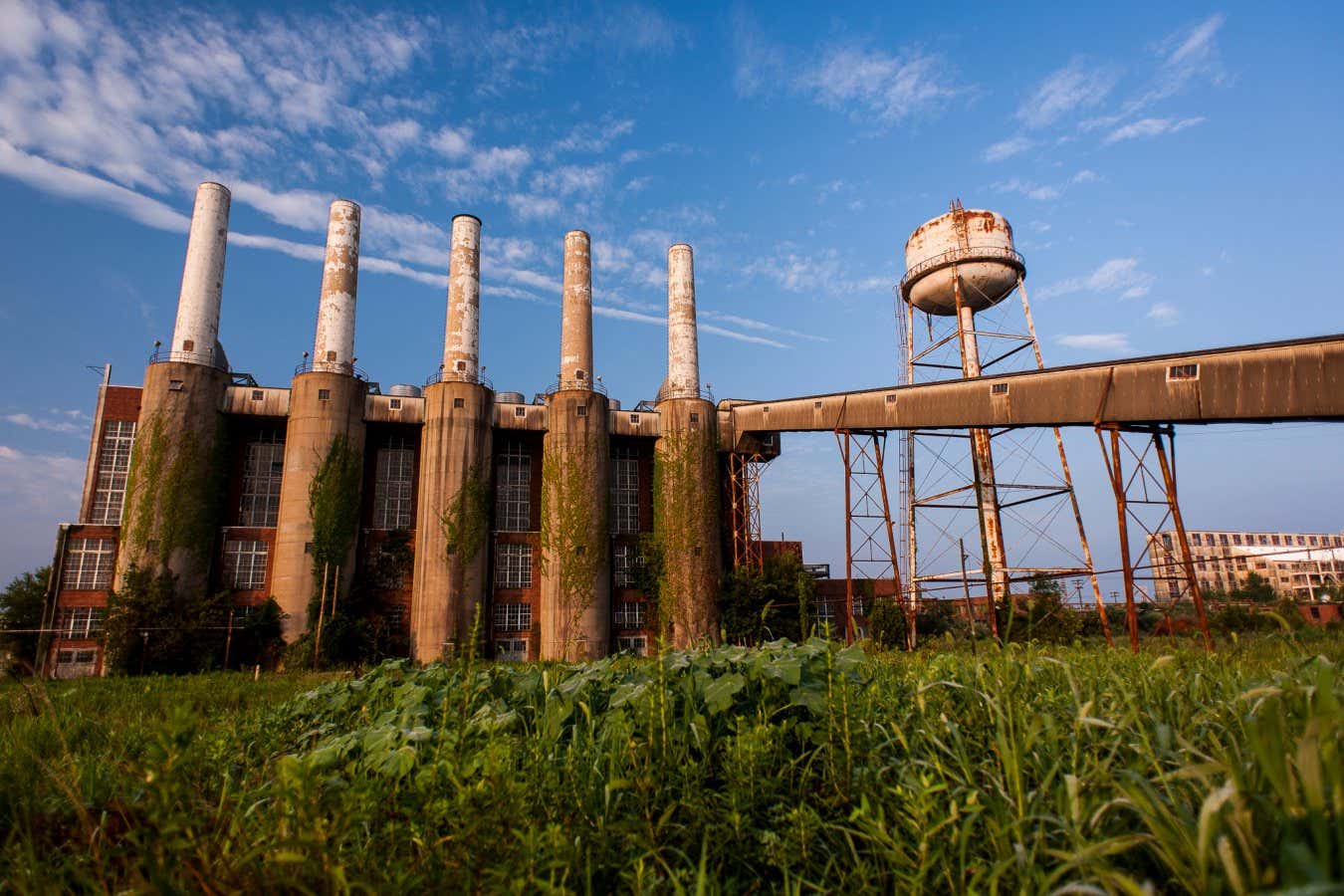Piles of dirt can cheaply store renewable energy as heat – and that stored energy can reactivate the machinery of retired coal power plants, letting them provide backup power for the electricity grid
By Jeremy Hsu
5 August 2025
A derelict coal power plant at the abandoned Indiana Army Ammunition Plant
The American Explorer/Shutterstock
Dozens of retired coal-fired power plants could find new life providing backup or emergency power for the electricity grid – except this time without the need for fossil fuels. They could instead rely on heat energy stored in dirt.
Read more
Is ultra cheap green hydrogen on the horizon?
The concept involves creating a huge dirt pile near a coal plant and placing industrial heaters inside. During the grid’s low-demand periods, these machines would convert cheap electricity into heat, which would remain stored within the dirt at a temperature of about 600°C. During times of high power demand, the heat could be transferred out of the dirt via pipes of heated liquid.
The coal plant’s turbine blades and connected generator could then turn that heat into backup energy. The heat would transform water into steam, which would spin the turbine blades to produce electricity. “Instead of taking the coal to heat up the water to produce the steam, you use the heat from this energy stored in the dirt,” says Ken Caldeira at Stanford University in California.
Energy storage like this is necessary to supplement renewable power sources, such as wind and solar, which only provide energy intermittently. And dirt is cheaper, more abundant and more widely available than other types of long-term energy storage, such as lithium batteries or hydrogen fuel.
“The really exciting part is specifically the low energy capacity cost, because it’s so much cheaper than other energy technologies,” says Alicia Wongel at Stanford University.
